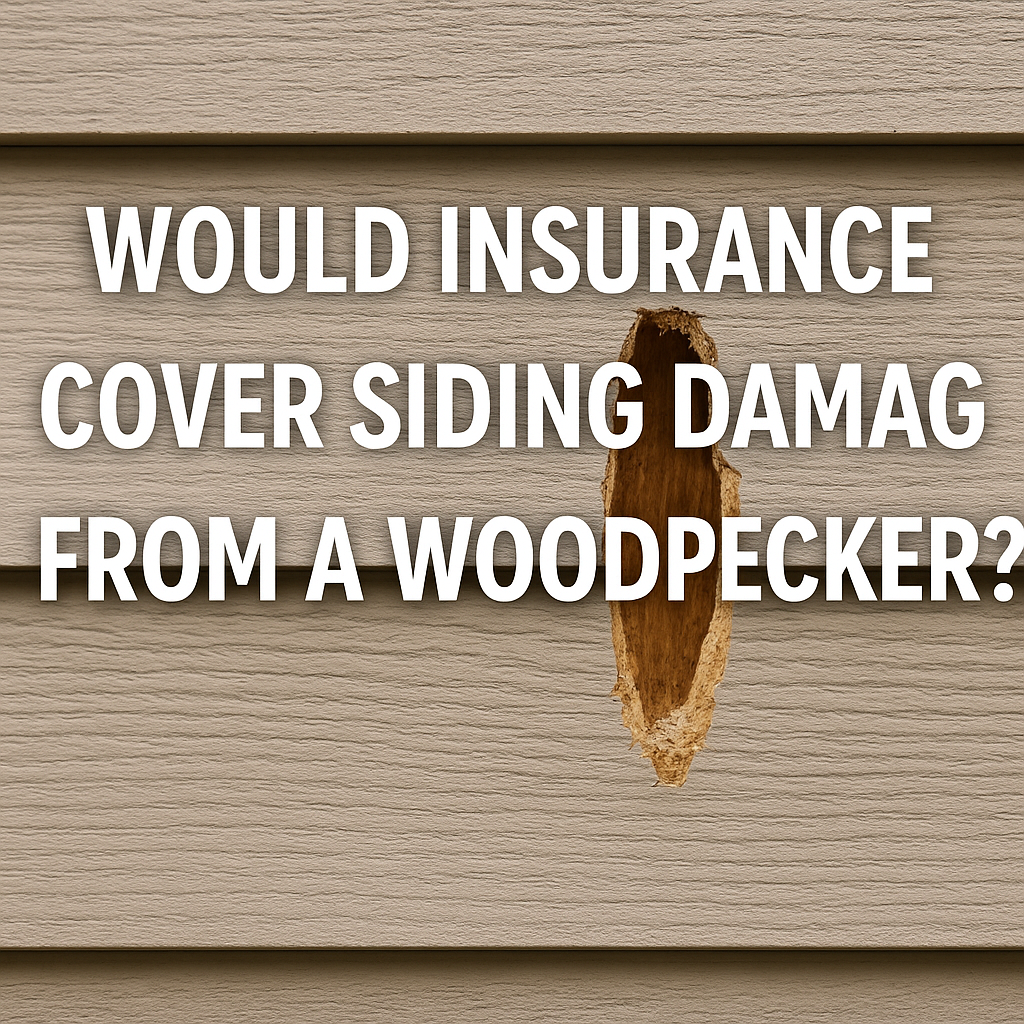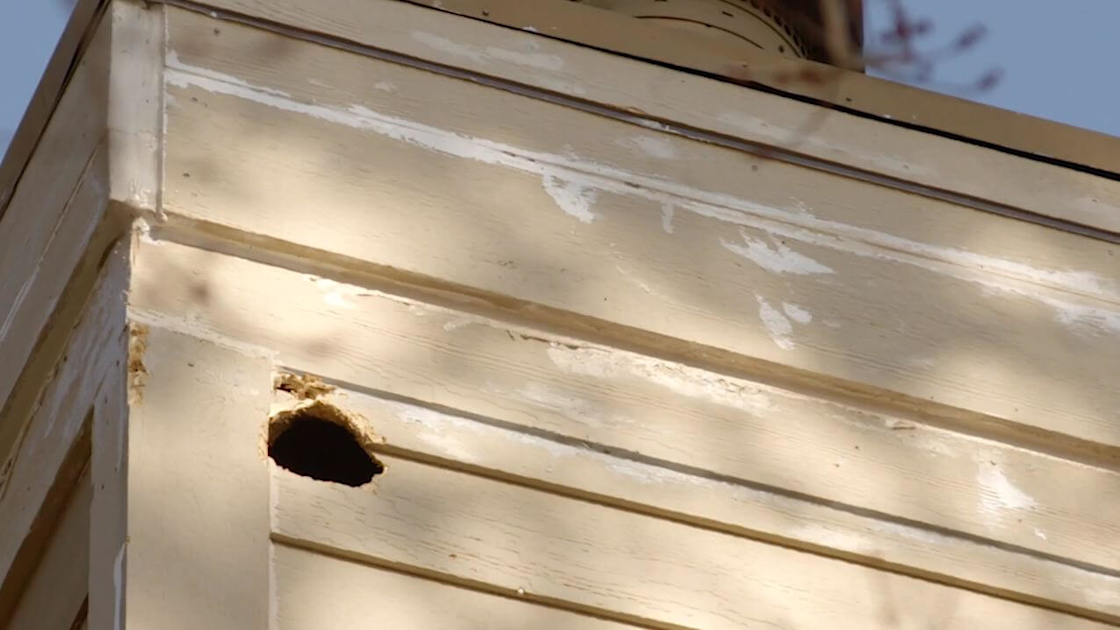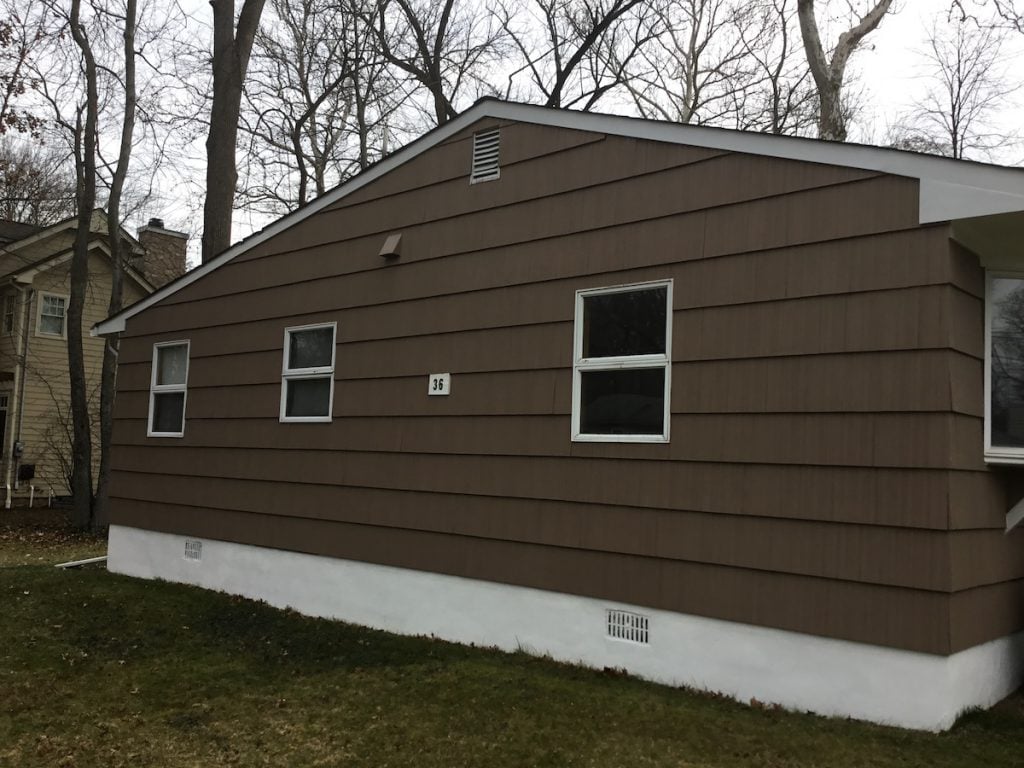614 Exteriors is the ONLY Atlas PRO+™ Diamond Level Contractor in the Greater Columbus Area and only 1 of 3 in the state of Ohio
Learn MoreWorried about woodpecker holes in your siding? Learn if your insurance covers woodpecker damage, how much repairs cost, and how to prevent future damage.

Imagine waking up to a rat-a-tat-tat echoing from your home's exterior. A persistent woodpecker is drilling away at your siding. You shoo it off, but the damage is done – small holes pockmark your beautiful wood siding. It's an annoying and unexpected problem. Naturally, you might wonder would insurance cover siding damage from a woodpecker, or are you stuck paying for repairs yourself? Let's explore the answer, along with why woodpeckers peck homes, how to handle the damage, and ways to protect your siding.
Woodpeckers don't attack your siding out of spite – they're following instinct. Common reasons woodpeckers hammer on home exteriors include:
Unfortunately, this natural behavior leads to unsightly holes in siding, trim, or eaves. Those gaps are more than cosmetic – they can let moisture and pests into your walls if not fixed.
After discovering woodpecker holes, the big question is: will your homeowners insurance pay for this damage? Usually, the answer is no. Standard home insurance covers sudden accidents (like fire or hail), not gradual damage from pests. Insurers view woodpecker damage as a preventable maintenance issue (similar to termite or rodent damage). In fact, most policies explicitly exclude damage caused by birds or insects. That means in nearly every case woodpecker siding damage is not covered by homeowners' insurance. Unfortunately, the homeowner will be responsible for fixing this type of damage out-of-pocket.

Would insurance cover siding damage from a woodpecker?
Does homeowners insurance cover siding damage in general? It depends on what caused the damage. Some causes are covered, and others are excluded. For example:
If a covered peril like a windstorm or fire damages your siding, your policy should pay for the repairs. But problems caused by animals, insects, or neglect are not covered. Unfortunately, woodpecker damage falls into that latter category of "pest" damage, which homeowners insurance won’t pay for.
Since woodpecker siding damage isn’t covered by homeowners insurance in most cases, filing a claim will usually be a dead end. Even if you try, your deductible may be as high as the repair cost, and a denied claim could still go on your record. It’s often smarter to pay for the repair yourself than to risk higher premiums over a small incident. Home insurance is best saved for major disasters, not minor pest damage. Unless the woodpecker caused extremely extensive destruction, it’s wiser to skip the claim and focus on fixing the damage (and preventing a repeat).
Repair costs for woodpecker damage can range quite a bit. If it’s just a few small holes, you might only spend a few hundred dollars to patch them. However, if large sections of siding need replacement, the bill could climb into the low thousands.
It’s best to have a Siding Contractor assess the damage. An experienced pro will determine if you can get away with simple patches or if entire boards must be replaced. They’ll also check for any underlying problems (like insects or rot that may have attracted the woodpecker). Make sure to repair woodpecker damage promptly – even small holes can invite moisture or pests into your home if left unattended. While covering repair costs out-of-pocket isn’t fun, taking care of the issue quickly will save you from bigger headaches down the road.
Once you’ve repaired the damage, the last thing you want is a woodpecker coming back for round two. Prevention is key to protecting your home. A few strategies can help keep woodpeckers away:
No method is foolproof, but using a combination of tactics greatly improves your odds. The goal is to make your house less appealing than the nearby trees. With a bit of effort, you can stop future woodpecker attacks before they start.

If woodpeckers keep damaging your house, it might be time to switch to a siding material they won’t bother. One proven solution is fiber cement siding (e.g. James Hardie board). Fiber cement contains no organic wood, so it doesn’t attract insects and is very hard – woodpeckers typically leave it alone. The Pros and Cons of Hardie Board Siding goes into detail, but the bottom line is Hardie board is extremely durable and pest-resistant.
Another approach is to use Vinyl Siding or similar non-wood siding. Vinyl contains nothing edible for a woodpecker and is not easy for them to damage. It’s also a budget-friendly, low-maintenance choice. If your old wood siding has been repeatedly attacked or patched, upgrading to a woodpecker-proof material can save you a lot of frustration (and repair costs) in the long run.
Recently, a homeowner in Worthington discovered that a woodpecker had peppered his cedar siding with holes. He was worried about the repair cost and wondered if insurance would help. He called 614 Exteriors for guidance. As a local Worthington Siding Company, we inspected the damage and, as expected, had to inform him that his homeowners policy wouldn’t cover it.
Instead, we focused on getting it fixed quickly. Our team replaced the damaged boards and blended the new siding seamlessly into the existing wall. We also advised him on a few deterrent tricks to help prevent future woodpecker visits. The homeowner was relieved to have his home repaired without having to battle an insurance claim. This is what we strive for at 614 Exteriors – stepping in to help homeowners protect their homes with expert Siding Installation and repairs when unexpected problems strike.